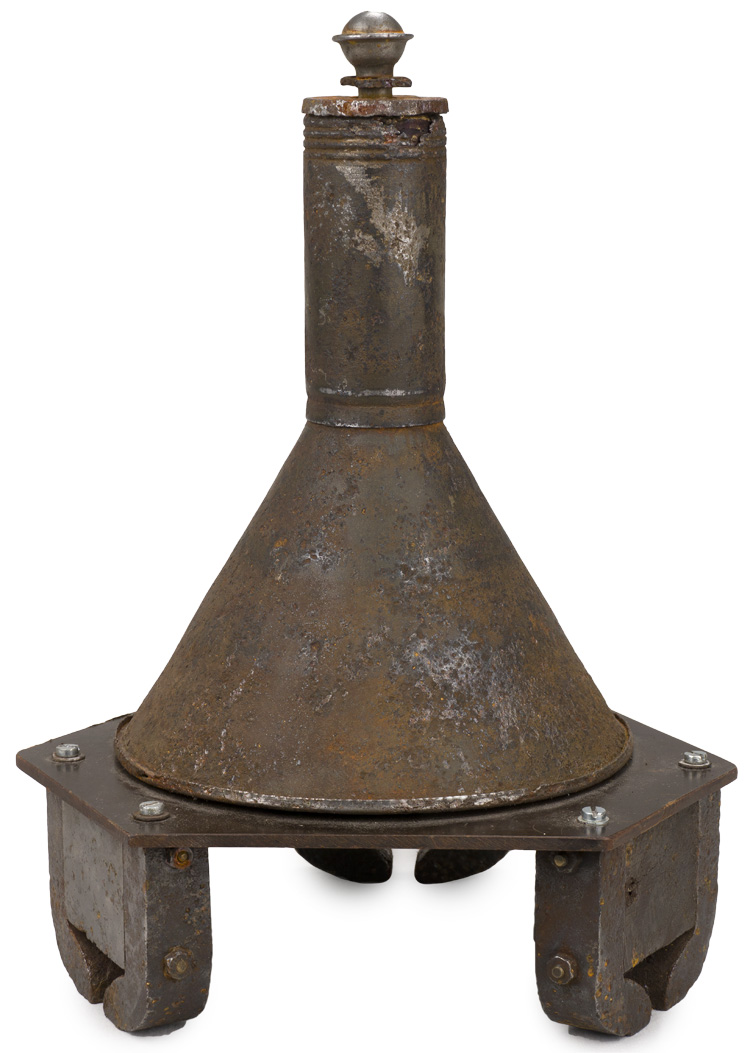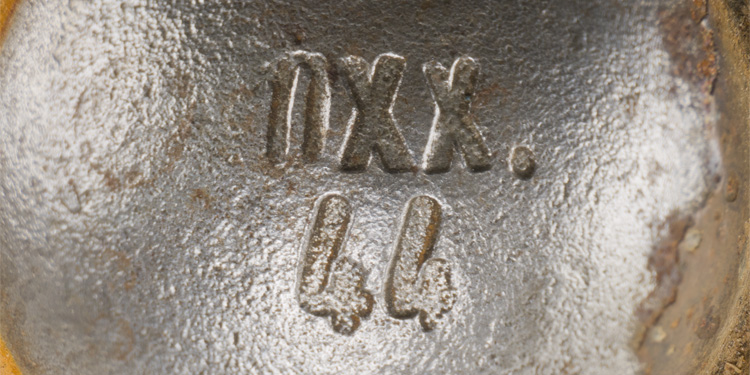



H042086 MAGNETIC ANTI-TANK EXPLOSIVE CHARGE (Inert/Deactivated). (Hafthohlladung)
BACKGROUND: With the invasion of Russia in June 1941 the Germans encountered the Russia T34 tank for the first time and found that they were under equipped in personal Infantry anti-tank weapons and the anti-tank weapons they did posses had insufficient power to penetrate the thick armored plating of the T34's. This situation resulted in the Germans quickly scrambling to develop more effective personal anti-tank weapons. The development and production of German army ordnance was under the supervision of the HwaA, Heereswaffenamt, (Army Ordnance Office), which was a subsection of the OKH, Oberkommando des Heeres, (High Command of the Army), and was responsible for testing, evaluation and eventual issue of all ordnance. In late 1941 or early 1942 the HwaA introduced the 3 kilogram, explosive, magnetic anti-tank charge which was first utilized in the Wolchow sector of the Russian front in May 1942. The 3Kg magnetic anti-tank charge was designed to be secured to the enemy tank by the magnets and the explosive charge was sufficient to blast through up to 150mm of armored plating. When placed on a tank the 3Kg charge was equipped with a seven second igniter allowing the operator ample time to vacate the area. The 3Kg charge could also be outfitted with a four and a half second igniter if it was to be thrown. Generally the 3Kg anti-tank charges were handled by Pionier, (Combat Engineers), troops and each Division in the German army, and the Waffen-SS, had an organic Engineer battalion that consisted of personnel specially trained in destroying enemy obstacles, creating forward defensive positions, bridging and assault tactics. As the spearhead troops, personnel serving with an Engineer unit, generally experienced higher casualties rates then standard units. Of Note: As a direct result of the development of the 3Kg magnetic anti-tank charge the Germans introduced the non-magnetic, "zimmerit" paste to be applied to their own tanks although it proved pointless as the allies never developed any magnetic anti-tank charges. Also Of Note: Further personal anti-tank weapons development brought about the introduction of the Faustpatrone 1, and the RPzB43, recoilless rocket launcher in July 1943 and the Panzerfaust 60 in August 1944.
PHYSICAL DESCRIPTION: The sheet metal, steel, magnet and bakelite, construction anti-tank charge is roughly, 30cm tall, inclusively and consists of an inverted, conical, funnel shaped, sheet metal top section, screw mounted on a six sided, molded brown bakelite base. Has some rusting and pitting. Scarce anti-tank ordnance item.
Please note, due to Postal Regulations. De-activated firearms and Inert Ordnance may not be shipped outside of Canada.
GRADE ***
1/4
PRICE $
![]()
To Order this item, please use one of the two e-mail addresses below to contact us. Please make sure to quote the item number in your e-mail
MILITARIA WANTED! If you have items for sale, please contact us. We specialize in selling single pieces and entire collections. Over 3 decades in the business and we do all the work for you. Get the best return for your investment.
-E-Mail Address pawmac@nbnet.nb.ca Or guild@nb.aibn.com
To return to the main page please CLICK below